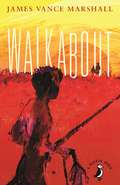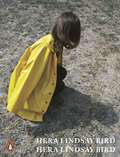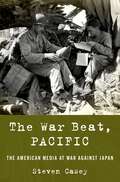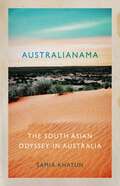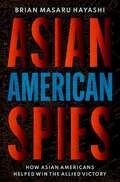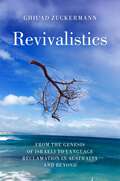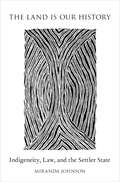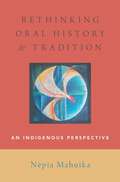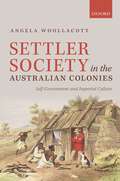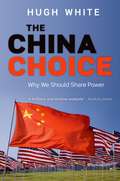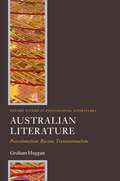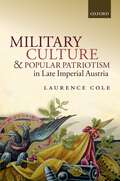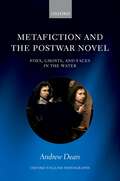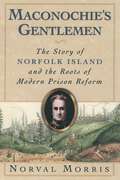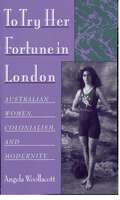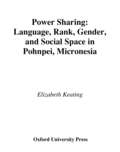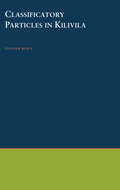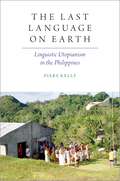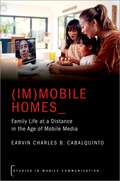- Table View
- List View
Walkabout (Penguin Joint Venture Readers Ser.)
by James Vance MarshallMary and her young brother Peter are the only survivors of an aircrash in the middle of the Australian outback. Facing death from exhaustion and starvation, they meet an aboriginal boy who helps them to survive, and guides them along their long journey. But a terrible misunderstanding results in a tragedy that neither Mary nor Peter will ever forget . . .
Hera Lindsay Bird
by Hera Lindsay BirdNew Zealand's best-selling poetry collection, from the mysterious force behind such classics as 'Monica' (as in, the one from Friends) and 'Keats is Dead so F**k Me from Behind'this impressive debut has established Hera Lindsay Bird as a good girl......with many beneficial thoughts and feelings......with themes as varied as snow and tears, the poems in this collection shine with the fantastic cream of who she is................juxtaposing many classical and modern breezesBird turns her prescient eye on love and loss, and what emerges is like a helicopter in fog......or a bejewelled Christmas sleigh, gliding triumphantly through the contemporary aesthetic desert.........this is at once an intelligent and compelling fantasy of tenderness......heart-breaking and charged with trees......without once sacrificing the forest............whether you are masturbating luxuriously in your parents' sleepout....................or pushing a pork roast home in a vintage pram...................this is the book for you.............................................heroically and compulsively stupid.............................................................................................................................whipping you once again into medieval sunlight.PRAISE FOR HERA LINDSAY BIRD'I think there's a pretty strong case which suggests Hera Lindsay Bird is like the most exciting newish poet in NZ' - Steve Braunias'On more than one occasion, while working through a poem, I have found myself asking, what would Hera Lindsay Bird do?' - Bill Manhire'Hi, dear, we have to say how much we enjoyed, if right word, the Hate poem. Really made us think, loved the line about the ancient cannon' - Text message from Ashleigh Young's mum'The wickedest problem in Hera Lindsay Bird is not sex but taste' - John Newton
The War Beat, Pacific: The American Media at War Against Japan
by Steven CaseyThe definitive history of American war reporting in the Pacific theater of World War II, from the attack on Pearl Harbor to the atomic bombings of Hiroshima and Nagasaki. After almost two years slogging with infantrymen through North Africa, Italy, and France, Ernie Pyle immediately realized he was ill-prepared for covering the Pacific War. As Pyle and other war correspondents discovered, the climate, the logistics, and the sheer scope of the Pacific theater had no parallel in the war America was fighting in Europe. From Pearl Harbor to Hiroshima and Nagasaki, The War Beat, Pacific provides the first comprehensive account of how a group of highly courageous correspondents covered America's war against Japan, what they witnessed, what they were allowed to publish, and how their reports shaped the home front's perception of some of the most pivotal battles in American military history. In a dramatic and fast-paced narrative based on a wealth of previously untapped primary sources, Casey takes us from MacArthur's doomed defense on the Philippines and the navy's overly strict censorship policy at the time of Midway, through the bloody battles on Guadalcanal, New Guinea, Tarawa, Saipan, Leyte and Luzon, Iwo Jima and Okinawa, detailing the cooperation, as well as conflict, between the media and the military, as they grappled with the enduring problem of limiting a free press during a period of extreme crisis. The War Beat, Pacific shows how foreign correspondents ran up against practical challenges and risked their lives to get stories in a theater that was far more challenging than the war against Nazi Germany, while the US government blocked news of the war against Japan and tried to focus the home front on Hitler and his atrocities.
The War Beat, Pacific: The American Media at War Against Japan
by Steven CaseyThe definitive history of American war reporting in the Pacific theater of World War II, from the attack on Pearl Harbor to the atomic bombings of Hiroshima and Nagasaki. After almost two years slogging with infantrymen through North Africa, Italy, and France, Ernie Pyle immediately realized he was ill-prepared for covering the Pacific War. As Pyle and other war correspondents discovered, the climate, the logistics, and the sheer scope of the Pacific theater had no parallel in the war America was fighting in Europe. From Pearl Harbor to Hiroshima and Nagasaki, The War Beat, Pacific provides the first comprehensive account of how a group of highly courageous correspondents covered America's war against Japan, what they witnessed, what they were allowed to publish, and how their reports shaped the home front's perception of some of the most pivotal battles in American military history. In a dramatic and fast-paced narrative based on a wealth of previously untapped primary sources, Casey takes us from MacArthur's doomed defense on the Philippines and the navy's overly strict censorship policy at the time of Midway, through the bloody battles on Guadalcanal, New Guinea, Tarawa, Saipan, Leyte and Luzon, Iwo Jima and Okinawa, detailing the cooperation, as well as conflict, between the media and the military, as they grappled with the enduring problem of limiting a free press during a period of extreme crisis. The War Beat, Pacific shows how foreign correspondents ran up against practical challenges and risked their lives to get stories in a theater that was far more challenging than the war against Nazi Germany, while the US government blocked news of the war against Japan and tried to focus the home front on Hitler and his atrocities.
Australianama: The South Asian Odyssey in Australia
by Samia KhatunAustralian deserts remain dotted with the ruins of old mosques. Beginning with a Bengali poetry collection discovered in a nineteenth-century mosque in the town of Broken Hill, Samia Khatun weaves together the stories of various peoples colonized by the British Empire to chart a history of South Asian diaspora. Australia has long been an outpost of Anglo empires in the Indian Ocean world, today the site of military infrastructure central to the surveillance of 'Muslim-majority' countries across the region. Imperial knowledges from Australian territories contribute significantly to the Islamic-Western binary of the post- Cold War era. In narrating a history of Indian Ocean connections from the perspectives of those colonized by the British, Khatun highlights alternative contexts against which to consider accounts of non-white people. Australianama challenges a central idea that powerfully shapes history books across the Anglophone world: the colonial myth that European knowledge traditions are superior to the epistemologies of the colonized. Arguing that Aboriginal and South Asian language sources are keys to the vast, complex libraries that belie colonized geographies, Khatun shows that stories in colonized tongues can transform the very ground from which we view past, present and future.
Australianama: The South Asian Odyssey in Australia
by Samia KhatunAustralian deserts remain dotted with the ruins of old mosques. Beginning with a Bengali poetry collection discovered in a nineteenth-century mosque in the town of Broken Hill, Samia Khatun weaves together the stories of various peoples colonized by the British Empire to chart a history of South Asian diaspora. Australia has long been an outpost of Anglo empires in the Indian Ocean world, today the site of military infrastructure central to the surveillance of 'Muslim-majority' countries across the region. Imperial knowledges from Australian territories contribute significantly to the Islamic-Western binary of the post- Cold War era. In narrating a history of Indian Ocean connections from the perspectives of those colonized by the British, Khatun highlights alternative contexts against which to consider accounts of non-white people. Australianama challenges a central idea that powerfully shapes history books across the Anglophone world: the colonial myth that European knowledge traditions are superior to the epistemologies of the colonized. Arguing that Aboriginal and South Asian language sources are keys to the vast, complex libraries that belie colonized geographies, Khatun shows that stories in colonized tongues can transform the very ground from which we view past, present and future.
Asian American Spies: How Asian Americans Helped Win the Allied Victory
by Brian Masaru HayashiA recovery of the vital role Chinese, Japanese, and Korean Americans played in US intelligence services in Asia during World War II. Spies deep behind enemy lines; double agents; a Chinese American James Bond; black propaganda radio broadcasters; guerrilla fighters; pirates; smugglers; prostitutes and dancers as spies; and Asian Americans collaborating with Axis Powers. All these colorful individuals form the story of Asian Americans in the Office of Strategic Services (OSS), the forerunner of today's CIA. Brian Masaru Hayashi brings to light for the first time the role played by Chinese, Japanese, and Korean Americans in America's first centralized intelligence agency in its fight against the Imperial Japanese forces in east Asia during World War II. They served deep behind enemy lines gathering intelligence for American and Chinese troops locked in a desperate struggle against Imperial Japanese forces on the Asian continent. Other Asian Americans produced and disseminated statements by bogus peace groups inside the Japanese empire to weaken the fighting resolve of the Japanese. Still others served with guerrilla forces attacking enemy supply and communication lines behind enemy lines. Engaged in this deadly conflict, these Asian Americans agents encountered pirates, smugglers, prostitutes, and dancers serving as the enemy's spies, all the while being subverted from within the OSS by a double agent and without by co-ethnic collaborators in wartime Shanghai. Drawing on recently declassified documents, Asian American Spies challenges the romanticized and stereotyped image of these Chinese, Japanese, and Korean American agents--the Model Minority-while offering a fresh perspective on the Allied victory in the Pacific Theater of World War II.
Revivalistics: From the Genesis of Israeli to Language Reclamation in Australia and Beyond
by Ghil'ad ZuckermannIn this book, Ghil'ad Zuckermann introduces revivalistics, a new trans-disciplinary field of enquiry surrounding language reclamation, revitalization, and reinvigoration. Applying lessons from the Hebrew revival of the late nineteenth and early twentieth centuries to contemporary endangered languages, Zuckermann takes readers along a fascinating and multifaceted journey into language revival and provides new insights into language genesis. Beginning with a critical analysis of Israeli-the language resulting from the Hebrew revival-Zuckermann's radical theory contradicts conventional accounts of the Hebrew revival and challenges the family tree model of historical linguistics. Revivalistics demonstrates how grammatical cross-fertilization with the revivalists' mother tongues is inevitable in the case of successful "revival languages." The second part of the book then applies these lessons from the Israeli language to revival movements in Australia and globally, describing the "why" and "how" of revivalistics. With examples from the Barngarla Aboriginal language of South Australia, Zuckermann proposes ethical, aesthetic, and utilitarian reasons for language revival and offers practical methods for reviving languages. Based on years of the author's research, fieldwork, and personal experience with language revivals all over the globe, Revivalistics offers ground-breaking theoretical and pragmatic contributions to the field of language reclamation, revitalization, and reinvigoration.
The Land Is Our History: Indigeneity, Law, and the Settler State
by Miranda JohnsonThe Land Is Our History tells the story of indigenous legal activism at a critical political and cultural juncture in Australia, Canada, and New Zealand. In the late 1960s, indigenous activists protested assimilation policies and the usurpation of their lands as a new mining boom took off, radically threatening their collective identities. Often excluded from legal recourse in the past, indigenous leaders took their claims to court with remarkable results. For the first time, their distinctive histories were admitted as evidence of their rights. Miranda Johnson examines how indigenous peoples advocated for themselves in courts and commissions of inquiry between the early 1970s to the mid-1990s, chronicling an extraordinary and overlooked history in which virtually disenfranchised peoples forced powerful settler democracies to reckon with their demands. Based on extensive archival research and interviews with leading participants, The Land Is Our History brings to the fore complex and rich discussions among activists, lawyers, anthropologists, judges, and others in the context of legal cases in far-flung communities dealing with rights, history, and identity. The effects of these debates were unexpectedly wide-ranging. By asserting that they were the first peoples of the land, indigenous leaders compelled the powerful settler states that surrounded them to negotiate their rights and status. Fracturing national myths and making new stories of origin necessary, indigenous peoples' claims challenged settler societies to rethink their sense of belonging.
LAND IS OUR HISTORY C: Indigeneity, Law, and the Settler State
by Miranda JohnsonThe Land Is Our History tells the story of indigenous legal activism at a critical political and cultural juncture in Australia, Canada, and New Zealand. In the late 1960s, indigenous activists protested assimilation policies and the usurpation of their lands as a new mining boom took off, radically threatening their collective identities. Often excluded from legal recourse in the past, indigenous leaders took their claims to court with remarkable results. For the first time, their distinctive histories were admitted as evidence of their rights. Miranda Johnson examines how indigenous peoples advocated for themselves in courts and commissions of inquiry between the early 1970s to the mid-1990s, chronicling an extraordinary and overlooked history in which virtually disenfranchised peoples forced powerful settler democracies to reckon with their demands. Based on extensive archival research and interviews with leading participants, The Land Is Our History brings to the fore complex and rich discussions among activists, lawyers, anthropologists, judges, and others in the context of legal cases in far-flung communities dealing with rights, history, and identity. The effects of these debates were unexpectedly wide-ranging. By asserting that they were the first peoples of the land, indigenous leaders compelled the powerful settler states that surrounded them to negotiate their rights and status. Fracturing national myths and making new stories of origin necessary, indigenous peoples' claims challenged settler societies to rethink their sense of belonging.
Rethinking Oral History and Tradition: An Indigenous Perspective (Oxford Oral History Series)
by Nepia MahuikaIndigenous peoples have our own ways of defining oral history. For many, oral sources are shaped and disseminated in multiple forms that are more culturally textured than just standard interview recordings. For others, indigenous oral histories are not merely fanciful or puerile myths or traditions, but are viable and valid historical accounts that are crucial to native identities and the relationships between individual and collective narratives. This book challenges popular definitions of oral history that have displaced and confined indigenous oral accounts as merely oral tradition. It stands alongside other marginalized community voices that highlight the importance of feminist, Black, and gay oral history perspectives, and is the first text dedicated to a specific indigenous articulation of the field. Drawing on a Maori indigenous case study set in Aotearoa New Zealand, this book advocates a rethinking of the discipline, encouraging a broader conception of the way we do oral history, how we might define its form, and how its politics might move beyond a subsuming democratization to include nuanced decolonial possibilities.
Rethinking Oral History and Tradition: An Indigenous Perspective (Oxford Oral History Series)
by Nepia MahuikaIndigenous peoples have our own ways of defining oral history. For many, oral sources are shaped and disseminated in multiple forms that are more culturally textured than just standard interview recordings. For others, indigenous oral histories are not merely fanciful or puerile myths or traditions, but are viable and valid historical accounts that are crucial to native identities and the relationships between individual and collective narratives. This book challenges popular definitions of oral history that have displaced and confined indigenous oral accounts as merely oral tradition. It stands alongside other marginalized community voices that highlight the importance of feminist, Black, and gay oral history perspectives, and is the first text dedicated to a specific indigenous articulation of the field. Drawing on a Maori indigenous case study set in Aotearoa New Zealand, this book advocates a rethinking of the discipline, encouraging a broader conception of the way we do oral history, how we might define its form, and how its politics might move beyond a subsuming democratization to include nuanced decolonial possibilities.
Settler Society in the Australian Colonies: Self-Government and Imperial Culture
by Angela WoollacottThe 1820s to the 1860s were a foundational period in Australian history, arguably at least as important as Federation. Industrialization was transforming Britain, but the southern colonies were pre-industrial, with economies driven by pastoralism, agriculture, mining, whaling and sealing, commerce, and the construction trades. Convict transportation provided the labour on which the first settlements depended before it was brought to a staggered end, first in New South Wales in 1840 and last in Western Australia in 1868. The numbers of free settlers rose dramatically, surging from the 1820s and again during the 1850s gold rushes. The convict system increasingly included assignment to private masters and mistresses, thus offering settlers the inducement of unpaid labourers as well as the availability of land on a scale that both defied and excited the British imagination. By the 1830s schemes for new kinds of colonies, based on Edward Gibbon Wakefield's systematic colonization, gained attention and support. The pivotal development of the 1840s-1850s, and the political events which form the backbone of this story were the Australian colonies' gradual attainment of representative and then responsible government. Through political struggle and negotiation, in which Australians looked to Canada for their model of political progress, settlers slowly became self-governing. But these political developments were linked to the frontier violence that shaped settlers' lives and became accepted as part of respectable manhood. With narratives of individual lives, Settler Society shows that women's exclusion from political citizenship was vigorously debated, and that settlers were well aware of their place in an empire based on racial hierarchies and threatened by revolts. Angela Woollacott particularly focuses on settlers' dependence in these decades on intertwined categories of unfree labour, including poorly-compensated Aborigines and indentured Indian and Chinese labourers, alongside convicts.
Australian Literature: Postcolonialism, Racism, Transnationalism (Oxford Studies In Postcolonial Literatures Ser.)
by Graham HugganThe Oxford Studies in Postcolonial Literatures series offers stimulating and accessible introductions to definitive topics and key genres and regions within the rapidly diversifying field of postcolonial literary studies in English. In a provocative contribution to the series, Graham Huggan presents fresh readings of an outstanding, sometimes deeply unsettling national literature whose writers and readers just as unmistakably belong to the wider world. Australian literature is not the unique province of Australian readers and critics; nor is its exclusive task to provide an internal commentary on changing national concerns. Huggan's book adopts a transnational approach, motivated by postcolonial interests, in which contemporary ideas taken from postcolonial criticism and critical race theory are productively combined and imaginatively transformed. Rejecting the fashionable view that Australia is not, and never will be, postcolonial, Huggan argues on the contrary that Australian literature, like other settler literatures, requires close attention to postcolonial methods and concerns. A postcolonial approach to Australian literature, he suggests, is more than just a case for a more inclusive nationalism; it also involves a general acknowledgement of the nation's changed relationship to an increasingly globalized world. As such, the book helps to deprovincialize Australian literary studies. Australian Literature also contributes to debates about the continuing history of racism in Australia-a history in which the nation's literature has played a constitutive role, as both product and producer of racial tensions and anxieties, nowhere more visible than in the discourse it has produced about race, both within and beyond the national context.
Military Culture And Popular Patriotism In Late Imperial Austria
by Laurence ColeMilitary Culture and Popular Patriotism in Late Imperial Austria examines the interplay between popular patriotism and military culture in late imperial Austria. Laurence Cole suggests that two main questions should be asked regarding the western half of the Habsburg Monarchy during the period from the mid-nineteenth century to the outbreak of war in 1914. Firstly, how far did imperial Austrian society experience a process of militarization comparable to that of other European countries? Secondly, how far did the military sphere foster popular patriotism in the multinational state? Various manifestations of military culture, including hero cults and, above all, military veterans associations, provide the main subject for analysis in this volume. After exploring the historical development of military culture in the Habsburg Monarchy, Cole explains how the long reign of Emperor Franz Joseph I constituted a decisive phase in the militarization of Austrian society, with the dynasty and state emphasizing the military's role as the locus of loyalty. Popular manifestations of military culture, such as the hero cult surrounding Field Marshal Radetzky and military veterans associations, complemented the official agenda in many respects. However, veterans associations in particular constituted a political mobilization of the lower middle and lower classes, who asserted their own interests and position in civil society, as is shown by case studies of regions of the Austrian state with significant Italian-speaking populations (Trentino and the Littoral). State attempts to assert greater control of veterans activities led to national and political opposition at a time when tensions over 'militarism' and foreign policy increased. Military Culture and Popular Patriotism in Late Imperial Austria thus raises the question of whether the military was really a bulwark of the multinational state or rather a polarizing force in imperial Austrian society.
Metafiction and the Postwar Novel: Foes, Ghosts, and Faces in the Water (Oxford English Monographs)
by Andrew DeanMetafiction and the Postwar Novel is a full-length reassessment of one of the definitive literary forms of the postwar period, sometimes known as 'postmodern metafiction'. In the place of large-scale theorizing, this book centres on the intimacies of writing situations - metafiction as it responds to readers, literary reception, and earlier works in a career. The emergence of archival materials and posthumously published works helps to bring into view the stakes of different moments of writing. It develops new terms for discussing literary self-reflexivity, derived from a reading of Don Quixote and its reception by J.L. Borges - the 'self of writing' and the 'public author as signature'. Across three comprehensive chapters, Metafiction and Postwar Fiction shows how some of the most highly-regarded postwar writers were motivated to incorporate reflexive elements into their writing - and to what ends. The first chapter, on South African novelist J. M. Coetzee, shows with a new clarity how his fictions drew from and relativized academic literary theory and the conditions of writing in apartheid South Africa. The second chapter, on New Zealand writer Janet Frame, draws widely from her fictions, autobiographies, and posthumously published materials. It demonstrates the terms in which her writing addresses a readership seemingly convinced that her work expressed the interior experience of 'madness'. The final chapter, on American writer Philip Roth, shows how his early reception led to his later, and often explosive, reconsiderations of identity and literary value in postwar America.
Metafiction and the Postwar Novel: Foes, Ghosts, and Faces in the Water (Oxford English Monographs)
by Andrew DeanMetafiction and the Postwar Novel is a full-length reassessment of one of the definitive literary forms of the postwar period, sometimes known as 'postmodern metafiction'. In the place of large-scale theorizing, this book centres on the intimacies of writing situations - metafiction as it responds to readers, literary reception, and earlier works in a career. The emergence of archival materials and posthumously published works helps to bring into view the stakes of different moments of writing. It develops new terms for discussing literary self-reflexivity, derived from a reading of Don Quixote and its reception by J.L. Borges - the 'self of writing' and the 'public author as signature'. Across three comprehensive chapters, Metafiction and Postwar Fiction shows how some of the most highly-regarded postwar writers were motivated to incorporate reflexive elements into their writing - and to what ends. The first chapter, on South African novelist J. M. Coetzee, shows with a new clarity how his fictions drew from and relativized academic literary theory and the conditions of writing in apartheid South Africa. The second chapter, on New Zealand writer Janet Frame, draws widely from her fictions, autobiographies, and posthumously published materials. It demonstrates the terms in which her writing addresses a readership seemingly convinced that her work expressed the interior experience of 'madness'. The final chapter, on American writer Philip Roth, shows how his early reception led to his later, and often explosive, reconsiderations of identity and literary value in postwar America.
Maconochie's Gentlemen: The Story of Norfolk Island and the Roots of Modern Prison Reform (Studies in Crime and Public Policy)
by Norval MorrisIn 1840, Alexander Maconochie, a privileged retired naval captain, became at his own request superintendent of two thousand twice-convicted prisoners on Norfolk Island, a thousand miles off the coast of Australia. In four years, Maconochie transformed what was one of the most brutal convict settlements in history into a controlled, stable, and productive environment that achieved such success that upon release his prisoners came to be called "Maconochie's Gentlemen". Here Norval Morris, one of our most renowned criminologists, offers a highly inventive and engaging account of this early pioneer in penal reform, enhancing Maconochie's life story with a trenchant policy twist. Maconochie's life and efforts on Norfolk Island, Morris shows, provide a model with profound relevance to the running of correctional institutions today. Using a unique combination of fictionalized history and critical commentary, Morris gives this work a powerful policy impact lacking in most standard academic accounts. In an era of "mass incarceration" that rivals that of the settlement of Australia, Morris injects the question of humane treatment back into the debate over prison reform. Maconochie and his "Marks system" played an influential role in the development of prisons; but for the last thirty years prison reform has been dominated by punitive and retributive sentiments, the conventional wisdom holding that we need 'supermax' prisons to control the 'worst of the worst' in solitary and harsh conditions. Norval Morris argues to the contrary, holding up the example of Alexander Maconochie as a clear-cut alternative to the "living hell" of prison systems today.
To Try Her Fortune in London: Australian Women, Colonialism, and Modernity
by Angela WoollacottBetween 1870 and 1940, tens of thousands of Australian women were drawn to London, their imperial metropolis and the center of the publishing, art, musical, theatrical, and educational worlds. Even more Australian women than men made the pilgrimage "home," seeking opportunities beyond those available to them in the Australian colonies or dominion. In tracing the experiences of these women, this volume reveals hitherto unexamined connections between whiteness, colonial status, gender, and modernity.
Classificatory Particles In Kilivila
by Gunter SenftCommon among the world's languages is the phenomenon of classification, a partly or fully grammatical division of the noun lexicon into distinct classes that ultimately derives from the human need to classify and filter data on various levels while communicating. In this book, Senft describes and develops a grammar of classificatory particles in Kilivila, an Austronesian language of the Trobriand Islanders in Papua New Guinea. Drawing largely on his anthropological and linguistic fieldwork in the islands, and emphasizing the use of classifiers in a social context, Senft provides quantitative data and a statistical profile of the status and use of these particles, and the classifier system that employs them.
The Last Language on Earth: Linguistic Utopianism in the Philippines (Oxford Studies in the Anthropology of Language)
by Piers KellyThe Last Language on Earth is an ethnographic history of the disputed Eskayan language, spoken today by an isolated upland community living on the island of Bohol in the southern Philippines. After Eskaya people were first 'discovered' in 1980, visitors described the group as a lost tribe preserving a unique language and writing system. Others argued that the Eskaya were merely members of a utopian rural cult who had invented their own language and script. Rather than adjudicating outsider polemics, this book engages directly with the language itself as well as the direct perspectives of those who use it today. Through written and oral accounts, Eskaya people have represented their language as an ancestral creation derived from a human body. Reinforcing this traditional view, Piers Kelly's linguistic analysis shows how a complex new register was brought into being by fusing new vocabulary onto a modified local grammar. In a synthesis of linguistic, ethnographic, and historical evidence, a picture emerges of a coastal community that fled the ravages of the U.S. invasion of the island in 1901 in order to build a utopian society in the hills. Here they predicted that the world's languages would decline leaving Eskayan as the last language on earth. Marshalling anthropological theories of nationalism, authenticity, and language ideology, along with comparisons to similar events across highland Southeast Asia, Kelly offers a convincing account of this linguistic mystery and also shows its broader relevance to linguistic anthropology. Although the Eskayan situation is unusual, it has the power to illuminate the pivotal role that language plays in the pursuit of identity-building and political resistance.
The Last Language on Earth: Linguistic Utopianism in the Philippines (Oxford Studies in the Anthropology of Language)
by Piers KellyThe Last Language on Earth is an ethnographic history of the disputed Eskayan language, spoken today by an isolated upland community living on the island of Bohol in the southern Philippines. After Eskaya people were first 'discovered' in 1980, visitors described the group as a lost tribe preserving a unique language and writing system. Others argued that the Eskaya were merely members of a utopian rural cult who had invented their own language and script. Rather than adjudicating outsider polemics, this book engages directly with the language itself as well as the direct perspectives of those who use it today. Through written and oral accounts, Eskaya people have represented their language as an ancestral creation derived from a human body. Reinforcing this traditional view, Piers Kelly's linguistic analysis shows how a complex new register was brought into being by fusing new vocabulary onto a modified local grammar. In a synthesis of linguistic, ethnographic, and historical evidence, a picture emerges of a coastal community that fled the ravages of the U.S. invasion of the island in 1901 in order to build a utopian society in the hills. Here they predicted that the world's languages would decline leaving Eskayan as the last language on earth. Marshalling anthropological theories of nationalism, authenticity, and language ideology, along with comparisons to similar events across highland Southeast Asia, Kelly offers a convincing account of this linguistic mystery and also shows its broader relevance to linguistic anthropology. Although the Eskayan situation is unusual, it has the power to illuminate the pivotal role that language plays in the pursuit of identity-building and political resistance.
**Missing**: Family Life at a Distance in the Age of Mobile Media (Studies in Mobile Communication)
by Earvin Charles CabalquintoThe home has been on the forefront of rapid economic, political, social, and technological transformations for many individuals and families across the world. As a country reliant on the exportation of human labor to sustain its national economy, the Philippines exemplifies a valuable case study of the impacts of a globalized and networked society on the everyday dynamics of a transnational family arrangement. Despite ranking among the heaviest Internet users in the world, Filipino citizens are often left with no choice but to navigate digital and transnational environments orchestrated by the uneven distribution of both national and international resources and opportunities. (Im)mobile Homes investigates the role of smartphones, social media channels, and various mobile applications in forging and sustaining intimate ties among dispersed Filipino family members. Examining the digital lifeworlds of transnational Filipino family in Australia, this volume draws on rich ethnographic study to explore the benefits of digital communication as well as the tensions enabled by the influences of socio-cultural structures, socio-economic conditions, technological affordances, and institutional policies and processes on mobile practices. It portrays the physically distributed yet virtually connected nature of the transnational Filipino family through diverse contexts, such as observing family rituals, performing intimate care, and managing crises, and foregrounds their unique strategies in addressing the interruptions of connecting at a distance. Ultimately, this volume underscores how mobile practices of the transnational Filipino family negotiate the pre-existing and broader structural systems that (re)produce marginalization in a digital and global era. Enriched by moving stories of transnational families, (Im)mobile Homes offers a critical lens towards interrogating the possibilities and politics of a home from afar in the digital era.
